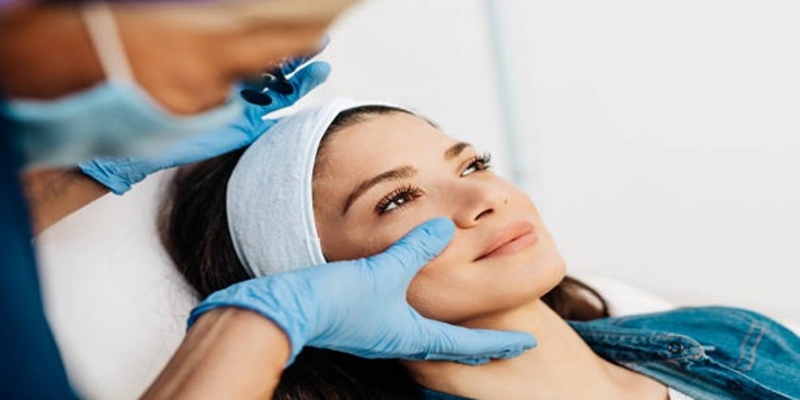Numbing creams have seen a surge in popularity across a wide range of medical and cosmetic procedures. These innovative products provide a welcomed respite from discomfort and pain. By effectively blocking nerve signals in the skin, these topical anesthetics ensure a smooth, pain-free experience, catering to procedures that span from minor skin treatments to complex surgical interventions. In this detailed exploration, we delve deeper into the realm of numbing creams, shedding light on their composition, intricate mechanisms of action, and crucial factors to consider before use.
Understanding Numbing Creams:
Numbing creams, also known as topical anesthetics, are medications applied to the skin to alleviate pain and discomfort. They typically contain active ingredients such as lidocaine, benzocaine, or prilocaine, which work by blocking the transmission of pain signals from the nerves to the brain. These creams are commonly used in medical procedures like vaccinations, blood draws, and minor surgeries, as well as in cosmetic treatments such as laser hair removal, tattooing, and dermal fillers.
7 Things You Need to Know:
1. Factors to Consider Before Using Numbing Creams:
While numbing creams can provide temporary relief from pain and discomfort, it is important to consider certain factors before using them. These include:
- Allergies: Before using any numbing cream, make sure to check for any allergies to the active ingredients. If you have a history of allergic reactions or sensitive skin, it's best to consult with your doctor before using a numbing cream.
- Age and Health Conditions: Numbing creams may not be suitable for everyone, especially children and those with certain health conditions such as heart disease or epilepsy. It's important to consult with your doctor before using numbing creams if you fall under these categories.
- Proper Usage: It is crucial to follow the recommended usage guidelines for numbing creams, as overusing them can lead to serious side effects like skin irritation, numbness in surrounding areas, and even toxicity.
- Interactions with Other Medications: Some medications may interact with numbing creams, so make sure to inform your doctor about any other medicines you are taking before using a numbing cream.
2. How To Use Numbing Creams?
Numbing creams should always be used according to the instructions provided by the manufacturer or as directed by your doctor. Generally, the steps for using numbing creams are as follows:
- Clean and dry the area where the cream will be applied.
- Apply a thin layer of numbing cream to the area and gently rub it in.
- Cover the area with plastic wrap or a bandage, if recommended by your doctor.
- Leave the cream on for the recommended time, usually 30-60 minutes depending on the type of procedure and strength of the cream.
- Remove the plastic wrap or bandage and wipe off any excess cream.
- The area should now be numb and ready for the procedure to begin.
It's important to note that numbing creams may take longer to work on thicker skin or areas with more hair follicles, so make sure to follow the recommended time for your specific procedure.
3. Potential Side Effects:
While numbing creams can provide relief from pain and discomfort, they may also come with certain side effects. These may include skin irritation, redness, swelling, or allergic reactions. If you experience any of these symptoms, stop using the cream immediately and consult with your doctor.
4. Types of Numbing Creams:
There are different types of numbing creams available, each with varying strengths and ingredients. Some common types include:
- Topical Creams: These are the most commonly used type of numbing cream, applied directly to the skin before a procedure.
- Transdermal Patches: These patches contain numbing medication and can be applied to the skin for longer-lasting numbness.
- Ointments: Similar to topical creams, ointments are thicker and may provide a longer-lasting numbing effect.
5. Application and Usage:
Numbing creams can be applied and used in a variety of ways, depending on the specific product and its intended use. Some common application methods include:
- For skin treatments: Numbing creams can be used before procedures such as laser hair removal or tattooing to minimize pain and discomfort.
- For minor medical procedures: Numbing creams can be applied before blood draws or injections to reduce discomfort.
- For surgeries: Numbing creams may be used before minor surgical procedures, but for more complex surgeries, other forms of anesthesia may be necessary. It's important to consult with your doctor before using numbing cream for any type of surgery.
6. Precautions and Contraindications:
While numbing creams can provide temporary relief from pain and discomfort, they may not be suitable for everyone. It's important to take certain precautions and consider potential contraindications before using numbing creams. These include:
- Pregnant or breastfeeding women should consult with their doctor before using numbing creams.
- People with liver or kidney disease should use caution when applying numbing creams, as the active ingredients are processed by these organs.
- Numbing creams should not be used on open wounds or broken skin.
- People with a history of methemoglobinemia (a rare blood disorder) should avoid using numbing creams containing prilocaine.
7. Consultation with Healthcare Provider:
Before utilizing a numbing cream, it is crucial to engage in a discussion with a qualified healthcare professional, especially if you have any underlying medical conditions or are currently taking medications that might have interactions with the cream. Your healthcare provider will be able to evaluate your specific risk factors comprehensively and suggest the most suitable numbing cream tailored to your requirements.
Conclusion:
Numbing creams offer a valuable solution for alleviating pain and discomfort during various medical and cosmetic procedures. Understanding how these creams work, their potential side effects, and proper usage guidelines is essential for ensuring a safe and effective experience. By following the recommendations of healthcare providers and exercising caution, individuals can benefit from the pain-relieving properties of numbing creams while minimizing the risk of adverse reactions.







